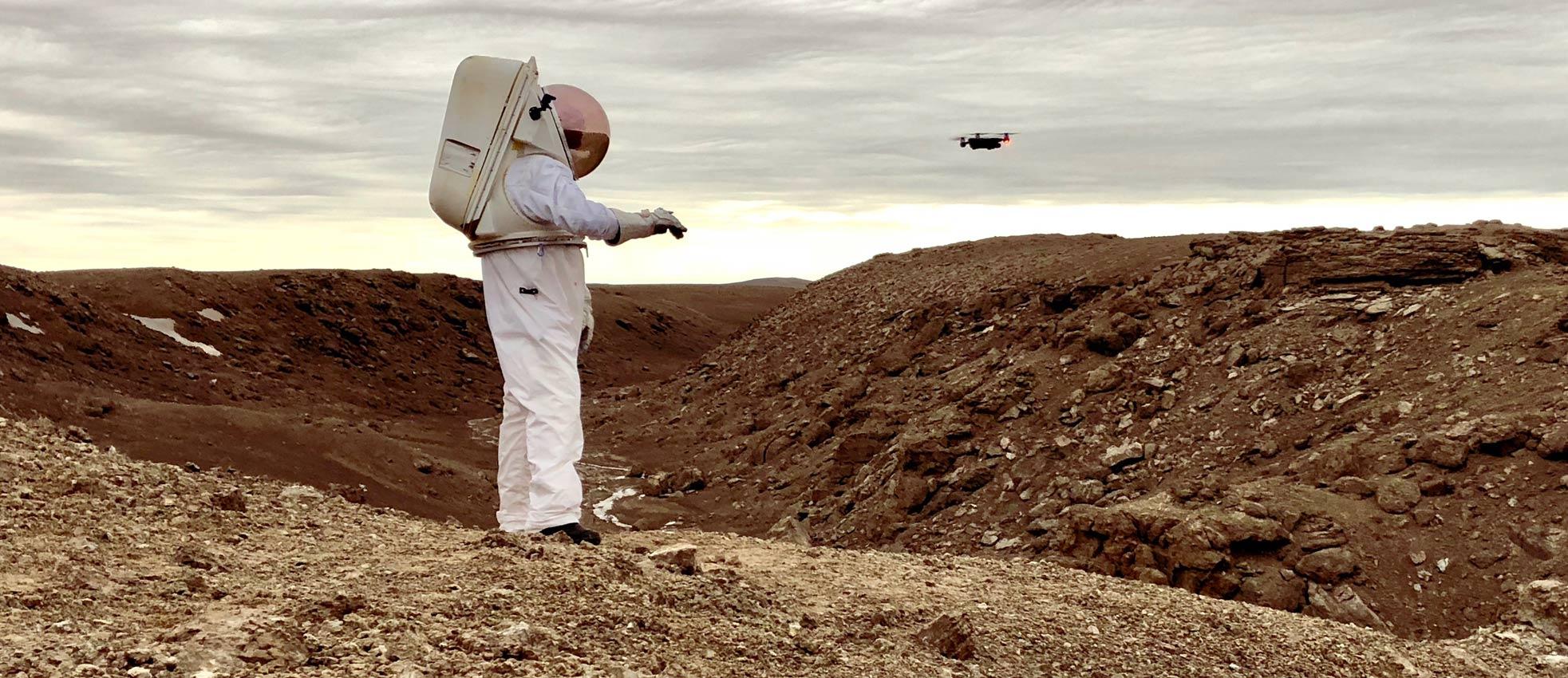
Scientists from NASA and the SETI Institute have developed a new “smart glove” for astronauts which is almost like magic. The glove allows astronauts to wirelessly control robots such as drones through one-handed gestures and could be used for future exploration of locations like the moon and Mars.
NASA recently unveiled the new spacesuits that astronauts will wear for the upcoming Artemis mission to the moon, and one of the challenges they addressed was how to allow precise finger movements in a pressurized suit. Their solution was to have the pressure be adjustable, so wearers can turn it down if they need to operate machinery using buttons.
The smart glove takes a different approach, interacting with machinery through whole-hand gestures instead of push buttons. The design is based on the work of Norwegian start-up Ntention, who created a glove for controlling drones here on Earth. It was then adapted by NASA and the SETI Institute to meet the needs of astronauts.
“When I first saw Ntention’s smart glove in action, I immediately thought of Arthur C. Clarke’s Third Law: ‘Any sufficiently advanced technology is indistinguishable from magic’,” Dr. Pascal Lee, a planetary scientist with the SETI Institute and the Mars Institute and director of the NASA Haughton-Mars Project (HMP) at NASA Ames Research Center, said in a statement. “A pressurized spacesuit is relatively rigid, and hand and finger motions meet with substantial resistance. In the Astronaut Smart Glove, the sensitivity of hand motions is adjustable and can be set high, which means the technology might be adaptable to a stiff pressurized spacesuit.”

The gloves have embedded sensors within them that can detect even small hand movements, with a microcontroller to read the sensor outputs. The information can then be transferred wirelessly to control a system such as a drone. The gloves were tested on commercial drones and were able to control them, although flying drones on the moon or Mars will be different because of the different atmospheres and gravity levels.
“Astronauts on the Moon or Mars will want to fly drones for various reasons,” Lee said. “For instance, to collect a sample that is out of reach or that needs to be isolated from contamination. Or to assist in a search and rescue operation. Over the past few seasons at HMP, we have been looking with NASA at how robotic flyers might assist astronauts in a variety of science and exploration tasks, including surveying, mapping, sampling, scouting, fetching, and inspecting.”
Editors' Recommendations
- Could there be underground lakes on Mars’s southern pole?
- The sound of science: Why audio is the next frontier in Mars exploration
- ‘Mars isn’t dead.’ There could be active volcanoes on the red planet
- Immersive 360 video captures Mission Control celebrations of Mars landing
- Mars has a new explorer: NASA’s Perseverance rover lands on the red planet




